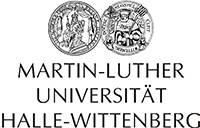Quantum physics: Physicists at the University of Halle develop a new theory for Bose-Einstein condensates

Research into the exotic state of matter dates back to Albert Einstein, who predicted the theoretical existence of Bose-Einstein condensates in 1924.
“Many attempts were made to prove their existence experimentally,” says Dr Carlos Benavides-Riveros from the Institute of Physics at MLU. Finally, in 1995, researchers in the U.S. succeeded in producing the condensates in experiments. In 2001 they received the Nobel Prize for Physics for their work.
Since then, physicists around the world have been working on ways to better define and describe these systems that would enable their behaviour to be more accurately predicted.
This normally requires extremely complex equations and models. “In quantum mechanics, the Schrödinger equation is used to describe systems with many interacting particles. But because the number of degrees of freedom increases exponentially, this equation is not easy to solve.
This is the so-called many-body problem and finding a solution to this problem is one of the major challenges of theoretical and computational physics today,” explains Benavides-Riveros. The working group at MLU is now proposing a method that is comparatively simple.
“One of our key insights is that the particles in the condensate interact only in pairs,” says co-author Jakob Wolff from MLU. This enables these systems to be described using much simpler and more established methods, like those used in electronic quantum systems.
“Our theory is in principle exact and can be applied to different physical regimes and scenarios, for example strongly interacting ultracold atoms. And it looks like it will be also a promising way to describe superconducting materials,” concludes Jakob Wolff.
Benavides-Riveros C. L., Wolff J., Marques M. A. L. & Schilling C.. Reduced Density Matrix Functional Theory for Bosons. Physical Review Letters (2020). doi: 10.1103/PhysRevLett.124.180603
https://journals.aps.org/prl/abstract/10.1103/PhysRevLett.124.180603
Media Contact
More Information:
http://www.uni-halle.deAll latest news from the category: Physics and Astronomy
This area deals with the fundamental laws and building blocks of nature and how they interact, the properties and the behavior of matter, and research into space and time and their structures.
innovations-report provides in-depth reports and articles on subjects such as astrophysics, laser technologies, nuclear, quantum, particle and solid-state physics, nanotechnologies, planetary research and findings (Mars, Venus) and developments related to the Hubble Telescope.
Newest articles

Silicon Carbide Innovation Alliance to drive industrial-scale semiconductor work
Known for its ability to withstand extreme environments and high voltages, silicon carbide (SiC) is a semiconducting material made up of silicon and carbon atoms arranged into crystals that is…

New SPECT/CT technique shows impressive biomarker identification
…offers increased access for prostate cancer patients. A novel SPECT/CT acquisition method can accurately detect radiopharmaceutical biodistribution in a convenient manner for prostate cancer patients, opening the door for more…

How 3D printers can give robots a soft touch
Soft skin coverings and touch sensors have emerged as a promising feature for robots that are both safer and more intuitive for human interaction, but they are expensive and difficult…





















